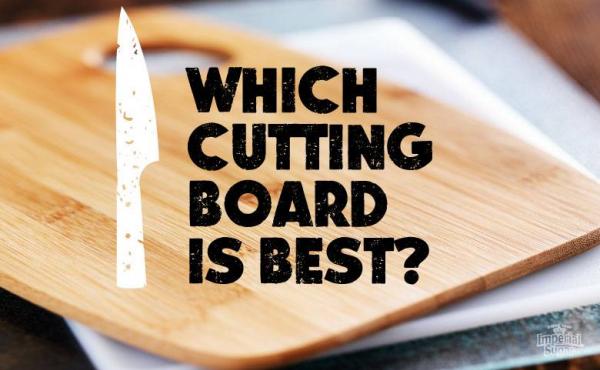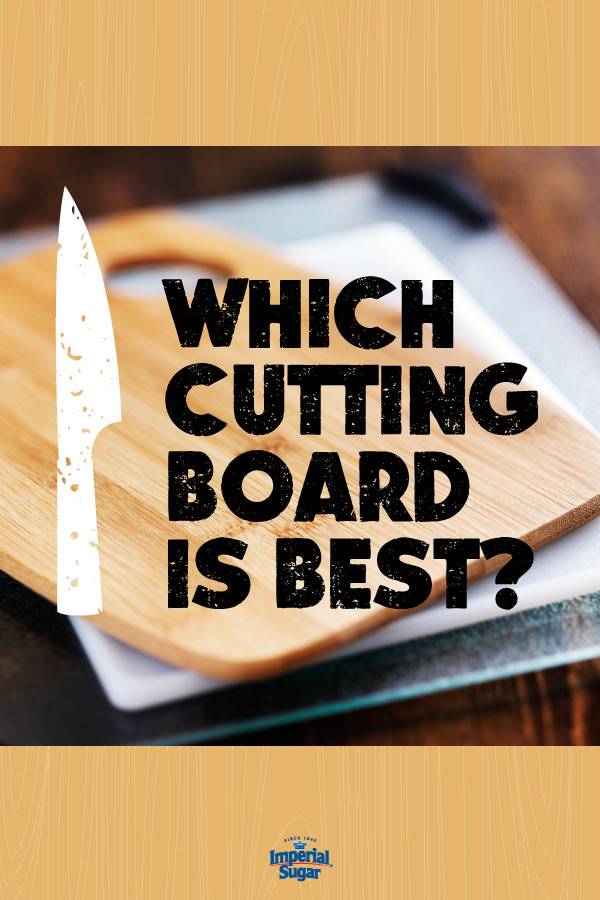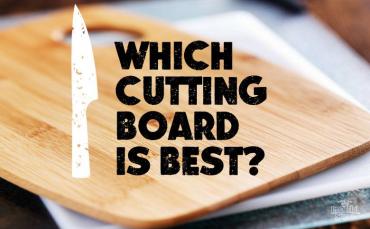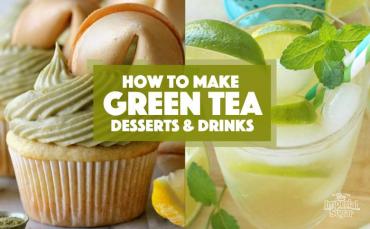
Which Type of Cutting Board is Best?

A true chef needs few appliances and utensils. One of the “essentials” is a high-quality chef’s knife, but as everyone knows, no knife is complete without a board to cut upon. When choosing a cutting board, it’s essential to think about longevity, safety and ease. Think about the longevity not just of the board itself, but also of the knives you wish to use with it. Safety concerns arise when with certain types of bacteria which can potentially be absorbed by your cutting board, and of busy kitchens, where anyone can be harmed with a quick slip of a knife. Ease all comes down to your cooking and cleaning style. There are typically four materials cutting boards are made out of: plastic, wood, glass and stone. We’ve outlined and evaluated each below based upon their longevity, safety and ease.
Plastic
Plastic cutting boards last a long time and don’t nick up your knives like other boards can. What’s great about plastic boards is that they’re easy to throw into the dishwasher after you’re done using them. Because of their cost-effectiveness, you can purchase multiple boards to use in your kitchen. This means you can have a raw meat board and a “general” board without breaking the bank.
Wood
Wood boards can last a long time if treated well. These boards are beautiful to look at and can make a great statement in the kitchen. To take care of them, they need to be well-oiled and well-washed. You shouldn’t put wood boards in the dishwasher, so they’ll need to be hand-washed after every use. Because of their grain, knives are less prone to slipping during quick cutting tasks. One concern about wood is that it can harbor bacteria more easily than other boards. If you’re using one, it’ll need to be thoroughly cleaned after every interaction with meat.
Glass
Glass boards are odor and scratch resistant. Because of the tempering process, glass boards can easily handle hot goods or ingredients. They’re easy to wash and can go in the dishwasher for sanitation. Glass boards, however, are tough on knives, dulling them quickly. Plus, glass boards make a lot of racket, what with two sharp materials (glass and metal) meeting with every chop, dice and julienne.
Stone
Stone cutting boards are relatively similar to glass boards. They, too, are odor and scratch resistant. They can handle warm temperatures and can be cleaned in the dishwasher. Just like glass boards, they pose a threat to knives, dulling them quickly. Stone boards also, because of their lack of friction, can cause a knife to run astray, slipping off the board and somewhere less than desirable. So, what do we like to use at Imperial Sugar? Eddy Van Damme, world-renowned chef, swears by his collection of plastic cutting boards. "They’re easy to clean and affordable to purchase," he said. "We keep at least two boards on handy at all times, one to handle raw meat and the other for everything else. Stone, glass and wood cutting boards are usually saved for parties, where we use them as serving platters. Even if you don’t use them for cooking, they’re still great for a gathering!" When it comes to setting up your kitchen, the small details matter. Pick a cutting board that’s safe, easy to clean and good for your knives. You’ll be thanking yourself in the future, when you cook up all those tasty and nourishing meals.
PIN IT NOW!

 then
then  Add IMPERIAL SUGAR to Home Screen
Add IMPERIAL SUGAR to Home Screen



Sign in or create an account
You need an account to like and rate recipes, comment, and share a recipe with the community.
Continue with Facebook